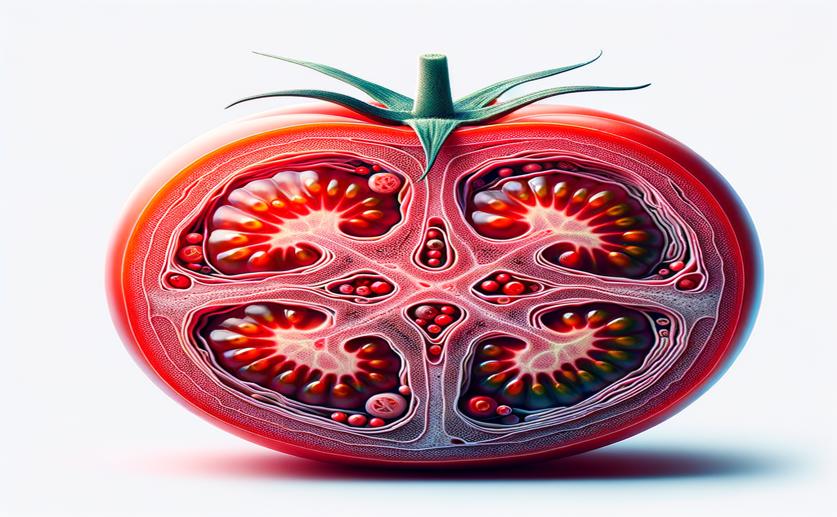
How Low Oxygen Affects Tomato Cell Walls During Ripening
Jim Crocker
6th June, 2024

Image Source: Natural Science News, 2024
Key Findings
- The study by the Polish Academy of Sciences examined how low oxygen conditions affect tomato ripening and cell wall composition
- Low oxygen stress changes the cell wall's protein content and distribution of certain compounds, with more significant changes in fully ripe tomatoes
- A 5% oxygen environment slows down ripening, while 0% oxygen speeds it up, with initial changes seen after 24 hours and more pronounced effects after 72 hours
References
Main Study
1) Low oxygen environment effect on the tomato cell wall composition during the fruit ripening process.
Published 6th June, 2024
Journal: BMC plant biology
Issue: Vol 24, Issue 1, Jun 2024
Related Studies
2) Response of plant metabolism to too little oxygen.
Journal: Current opinion in plant biology, Issue: Vol 6, Issue 3, Jun 2003
3) Regulation of the molecular response to oxygen limitations in plants.
4) Progress toward Understanding the Molecular Basis of Fruit Response to Hypoxia.



 16th May, 2024 | Jim Crocker
16th May, 2024 | Jim Crocker